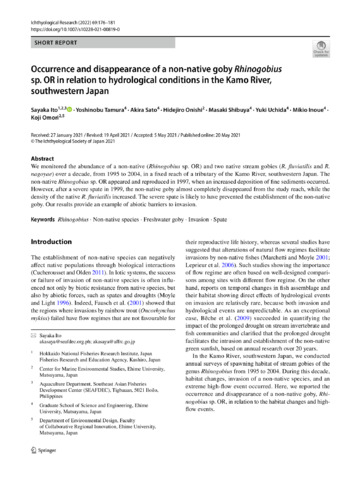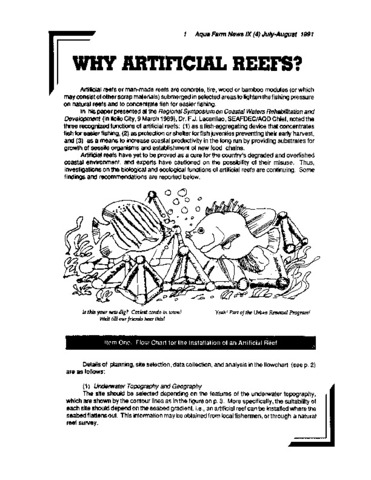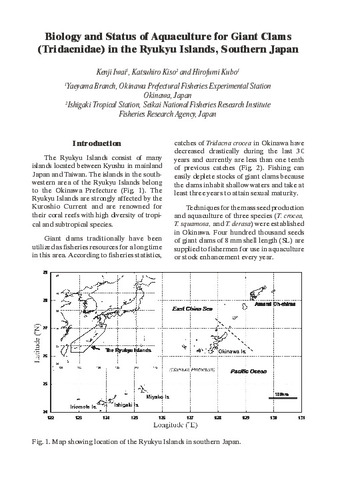| dc.contributor.author | Ito, Sayaka | |
| dc.contributor.author | Nakagawa, Toru | |
| dc.contributor.author | Shirafuji, Norio | |
| dc.contributor.author | Yokota, Takashi | |
| dc.contributor.author | Izumida, Daisuke | |
| dc.contributor.author | Onitsuka, Toshihiro | |
| dc.contributor.author | Kuroda, Hiroshi | |
| dc.contributor.author | Unuma, Tatsuya | |
| dc.contributor.author | Watanabe, Tsuyoshi | |
| dc.coverage.spatial | Akkeshi | en |
| dc.coverage.spatial | Hokkaido | en |
| dc.coverage.spatial | Japan | en |
| dc.date.accessioned | 2023-11-07T08:04:40Z | |
| dc.date.available | 2023-11-07T08:04:40Z | |
| dc.date.issued | 2023-09 | |
| dc.identifier.citation | Ito, S., Nakagawa, T., Shirafuji, N., Yokota, T., Izumida, D., Onitsuka, T., Kuroda, H., Unuma, T., & Watanabe, T. (2023). Distribution pattern and habitat use of the protandrous shrimp Pandalus latirostris in relation to environmental characteristics in Akkeshi waters on the pacific coast of eastern Hokkaido, Japan. Regional Studies in Marine Science, 67, 103198. https://doi.org/10.1016/j.rsma.2023.103198 | en |
| dc.identifier.uri | http://hdl.handle.net/10862/6503 | |
| dc.description.abstract | A sampling of the protandric shrimp, Pandalus latirostris, was conducted at fixed sites from July 2015 to March 2020 in Akkeshi Bay and the connecting Lake Akkeshi on the Pacific coast of eastern Hokkaido. Based on the occurrence pattern of P. latirostris, most individuals begin mating as males at Age-1, followed by a sex change to females, spawn eggs as females at Age-2, and hatch their eggs in the spring of Age-3. Pre-hatching ovigerous females were mainly found in eelgrass beds near and in Lake Akkeshi, where the water temperature was relatively high. The females probably migrate there to hatch their eggs, making sure of the high survival and growth of the hatched larvae. Juveniles and small males were also abundant in near and in Lake Akkeshi, indicating that many larvae remained in the eelgrass beds where they hatched. These eelgrass beds play an important role in the maintenance of the shrimp population as a major egg-hatching site and nursery habitat in Akkeshi waters. With ontogenetic development, the occurrence rate of P. latirostris gradually increased on the offshore side of Akkeshi Bay, with its body size being larger. As P. latirostris grow, they will probably disperse to the offshore side of Akkeshi Bay. However, the density of P. latirostris in the eelgrass bed in the bay near the lake was extremely high, with its strong preference at all ontogenetic stages. This eelgrass bed would help maintain the shrimp population as a “key habitat” for the shrimp. The site-specific environmental characteristics of vegetation beds influence the distribution and abundance of individuals within a population of P. latirostris through their growth and the associated change in habitat preference. In this study, the importance of maintaining the diverse habitats of P. latirostris will be discussed as part of the shrimp stock management measures. | en |
| dc.language.iso | en | en |
| dc.publisher | Elsevier | en |
| dc.subject | Japan | en |
| dc.subject.lcsh | Gender transition | en |
| dc.title | Distribution pattern and habitat use of the protandrous shrimp Pandalus latirostris in relation to environmental characteristics in Akkeshi waters on the pacific coast of eastern Hokkaido, Japan | en |
| dc.type | Article | en |
| dc.citation.volume | 67 | en |
| dc.citation.spage | 103198 | en |
| dc.citation.journalTitle | Regional Studies in Marine Science | en |
| dc.subject.asfa | habitats | en |
| dc.subject.asfa | sex | en |
| dc.subject.asfa | habitat selection | en |
| dc.subject.asfa | geographical distribution | en |
| dc.subject.asfa | environmental factors | en |
| dc.subject.asfa | life cycle | en |
| dc.subject.asfa | temporal variations | en |
| dc.subject.asfa | spatial variations | en |
| dc.subject.asfa | shrimp fisheries | en |
| dc.identifier.essn | 2352-4855 | |
| dc.identifier.doi | 10.1016/j.rsma.2023.103198 | |
| dc.subject.scientificName | Pandalus latirostris | en |
| local.subject | Pandalus latirostris | en |
| local.subject | Protandric shrimp | en |
| local.subject | Habitat use | en |
| local.subject | Life history | en |
| local.subject | Sex change | en |
| local.subject | Stock management | en |



